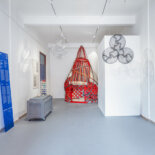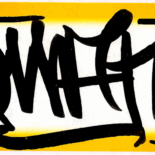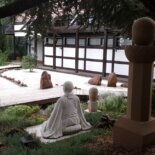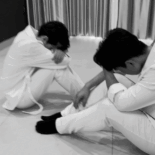Jerūiyq
Journey Beyond the Horizon
Fig. 1: Sketch for the Kazakhstan Pavilion 2024, exhibition model by Konstantin Petruk, © Kazakhstan Pavilion 2024 1_Decolonial Futurism as Creative Disruption Fiction Making Future Geographies It is believed that this socio-utopian legend reflects a specific historical situation in the mid-15th century, when the decline of the Golden and White Hordes led to the migration of several tribes to Moghulistan under the leadership of the khans Kerey and Janibek, and the founding of the Kazakh Khanate. [1] According to Danagul Tolepbay, these aspirations resonate not only with the current global situation, in which every person is searching for their place, but also with the main project of the 2024 Venice Biennale, Strangers Everywhere, as set by the curator Adriano Pedrosa. [2] Thus, geographical imagination finds itself at the center of the project. It connects the question of identity with decoloniality through spatialization. Like the fiction of Wakanda [3], it consciously strives to go beyond the horizon of existing social systems and corresponding systems of knowledge, engaging utopian imagination and science fiction. However, the elements of fiction are not arbitrary: they are based on deeper and more fundamental components of identity, necessarily including presumably pre-modern non-Western and non-capitalist elements. The effectiveness of decolonial futurisms—from Afrofuturism, Sinofuturism, and Ethnofuturism to certain readings of Russian Cosmism and endeavors to establish “comparative futurism” as a research field—is rooted in this combination. [4] Decolonial futurism is an attempt at a creative disruption, a transgression beyond the existing social and imaginary systems. Artistic decolonial futurisms often strengthen the mutual penetration of art and geography. Researchers have already elaborated on the concept of artful or experimental geography, as well as on art as geographical practice. [5] The opposite is also true: “the ‘expanded field’ of geographic knowledge-making now includes creative practitioners, who see their creative practices as part of the ‘doing’ of geography.” [6] Furthermore, “we could perhaps claim that geography is an emerging exhibitionary discipline, the focus of which is the geographical research exhibition.” [7] Geographer Denis Cosgrove wrote at the beginning of the 1980s that “geography takes over landscape from the hands of the painter.” [8] Today it can take over from the hands of artists decolonial futurism as the practice of making future geographies. [9] Forging new spatial identities and future geographies can happen with speculative artistic imagination or Störungsfiktionen (‘disruption fictions’)—“experimental drillings into the discursive subsurface of reality.” [10] But how exactly do…





